Table of Contents
● Introduction
● Market overview
● Different types and their features
● Things to consider when selecting products
● Conclusion
Introduction
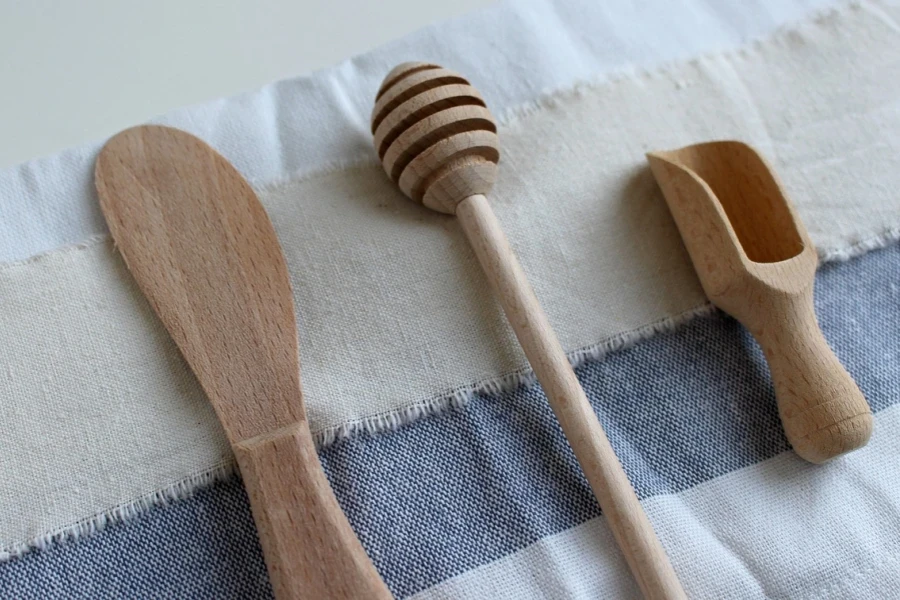
Disposable cutlery is essential for both households and commercial food services, offering convenience and hygiene. The global market for disposable cutlery is expanding, driven by the increasing demand for eco-friendly options and the rising popularity of fast food. Understanding the various types of disposable cutlery, from traditional plastic to sustainable alternatives like bamboo and CPLA, is crucial for businesses making informed purchasing decisions. Key factors include material sustainability, cost-effectiveness, and regulatory compliance. This guide provides a comprehensive overview of market trends, types of cutlery, and essential considerations for selecting the right products.
Market overview
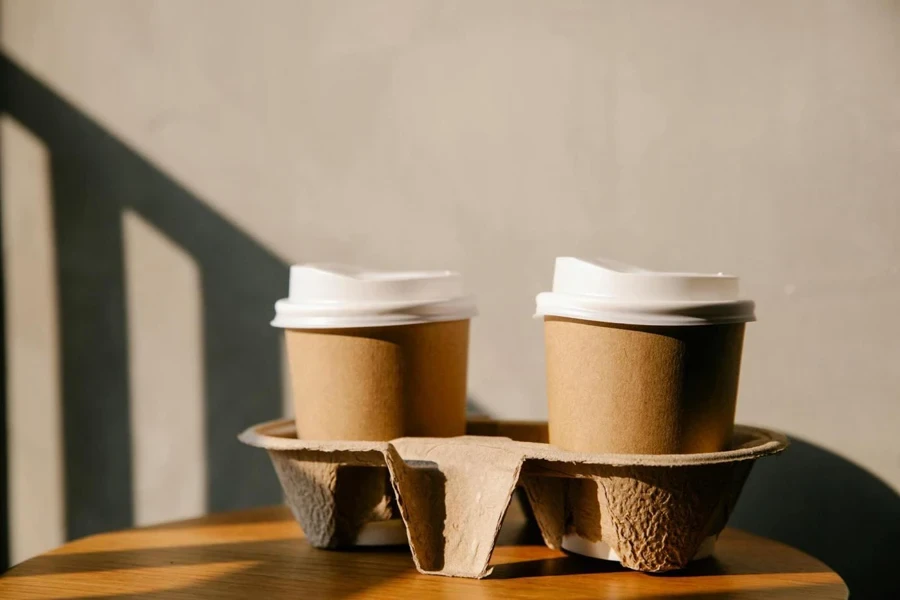
Market scale and growth
The global disposable cutlery market was valued at $12.1 billion in 2023 and is projected to reach $19.8 billion by 2033, growing at a compound annual growth rate (CAGR) of 5.2%. The market is segmented by product type, material, end use, and distribution channel, with plastic and wood being the primary materials used. Key market segments include spoons, forks, and knives, with spoons being the dominant product type due to their extensive use in various applications. The commercial segment, particularly within the hospitality and foodservice industries, holds a significant market share due to the increasing demand for disposable cutlery in restaurants, cafes, and hotels.
Regionally, Asia-Pacific dominates the global market, driven by high population density, increasing disposable income, and a growing preference for convenience-oriented lifestyles. North America and Europe are also significant markets, with a strong emphasis on eco-friendly and sustainable cutlery options. Market trends include a shift towards biodegradable materials such as bamboo, CPLA, and bagasse, driven by stringent regulations on single-use plastics and rising consumer awareness about environmental impact. Challenges include the high cost of sustainable alternatives and supply chain disruptions, while opportunities lie in the expanding fast-food industry and the growing online food delivery market.
Different types and their features
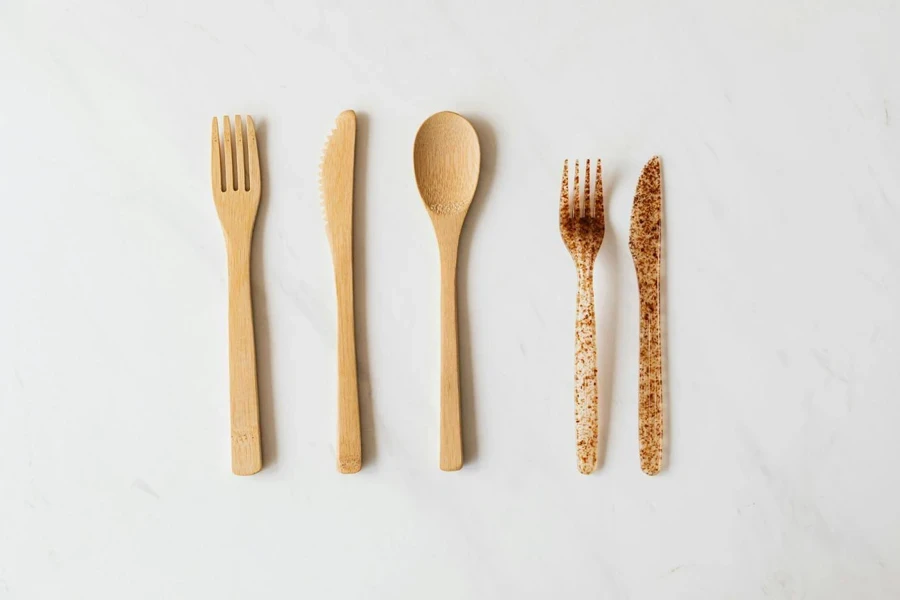
Paper cutlery
Paper cutlery is typically made from food-grade kraft paper, known for its environmental benefits and cost-effectiveness. It can come in various colors, allowing for customization in design. However, its tensile strength is relatively low, making it prone to breakage under pressure. The typical thickness ranges from 0.3mm to 0.5mm, which affects its durability and suitability for heavier foods.
Crystallized PLA (CPLA) cutlery
CPLA cutlery, derived from crystallized polylactic acid, offers enhanced heat resistance up to 185℉, making it suitable for both hot and cold applications. This bioplastic is made through a process of crystallization that increases its rigidity and strength compared to regular PLA. The typical density of CPLA cutlery is about 1.24 g/cm³, providing a sturdy alternative to traditional plastic cutlery while being fully compostable within 60 days in industrial composting facilities.
Plant starch material (PSM) cutlery
PSM cutlery is produced from fermented plant starch, offering a biodegradable and compostable option with a heat tolerance of up to 200℉. The bioplastic composition typically includes 70% plant starch and 30% synthetic polymers to enhance strength and durability. PSM cutlery usually comes in natural and white colors, with a melting point around 120℃, making it suitable for a range of food service applications.
Bagasse sugarcane cutlery
Made from the residual fibers of sugarcane stalks, bagasse cutlery is both lightweight and sustainable. It can withstand temperatures up to 250℉, making it ideal for hot foods. The density of bagasse material is approximately 0.6 g/cm³, which provides a balance between strength and compostability. Its fibrous nature gives it a unique texture and appearance, but it may not be as strong as other bioplastic alternatives.
Bamboo cutlery
Bamboo cutlery is crafted from the sheath of bamboo plants, offering a robust and eco-friendly option. With a high resistance to water and a heat tolerance up to 200℉, bamboo cutlery is designed to last longer without breaking. The tensile strength of bamboo is significantly higher than many other biodegradable materials, with a typical density of 0.5 to 0.6 g/cm³. This makes it a durable and reusable option, though it comes at a higher cost.
Wood cutlery
Wooden cutlery is made from sustainably sourced hardwoods such as birch, which are UV treated to prevent microbial growth. With a heat tolerance of up to 200℉, wooden cutlery is both sturdy and biodegradable. The typical thickness of wooden cutlery ranges from 1.5mm to 2.5mm, providing a robust and reliable option for various food service needs. The natural texture and appearance of wood add a premium feel, but it is generally more expensive than other disposable options.
Plastic cutlery
Plastic cutlery is predominantly made from polypropylene or polystyrene. Polypropylene cutlery offers good flexibility and a shiny surface, suitable for lighter dishes. Polystyrene cutlery, on the other hand, is denser and can create sharp edges, making it ideal for tougher foods. The heat resistance of plastic cutlery ranges up to 250℉, and it comes in various weights—medium, medium-heavy, and heavy—providing different levels of strength and durability. However, its non-biodegradable nature poses significant environmental challenges.
Things to consider when selecting products
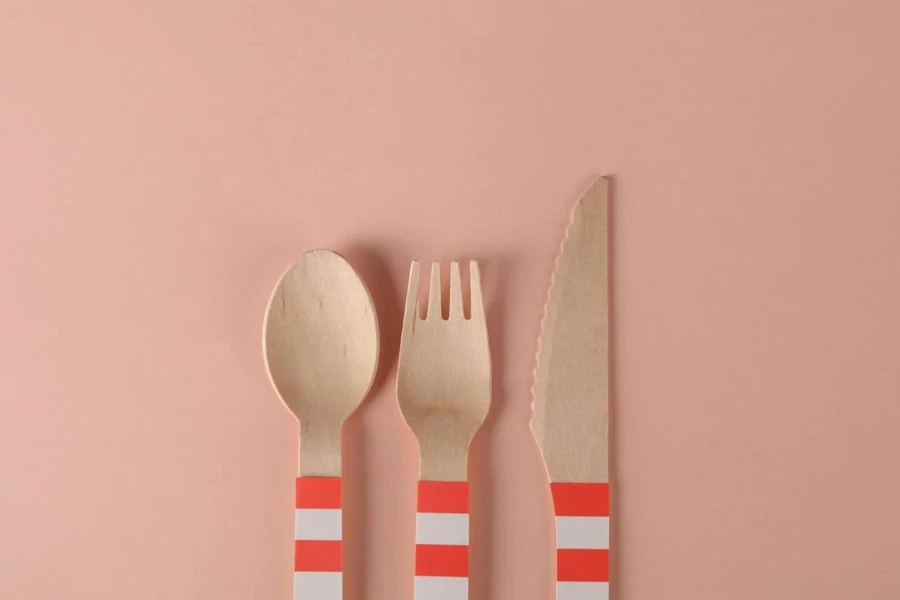
Material sustainability and environmental impact
Selecting disposable cutlery with sustainability in mind is crucial. Materials such as bamboo, wood, and bagasse are derived from renewable resources and are biodegradable, reducing environmental impact significantly. For instance, bamboo cutlery is made from fast-growing bamboo plants, which are harvested without harming the environment. Bagasse, a by-product of sugarcane processing, is another eco-friendly option that decomposes naturally. Businesses should prioritize these materials to align with increasing consumer demand for sustainable products.
Cost and budget constraints
Cost is a critical factor in selecting disposable cutlery. Plastic cutlery, made from polypropylene or polystyrene, is generally the most cost-effective option, making it popular for budget-conscious buyers. However, the rising regulations against plastic use necessitate exploring alternatives like CPLA or PSM, which, although more expensive, offer environmental benefits. Companies must balance the higher costs of sustainable materials with their budget constraints, considering long-term benefits such as regulatory compliance and brand reputation.
Durability and usability
The durability of disposable cutlery is essential for its functionality. For example, CPLA cutlery offers enhanced strength and heat resistance, making it suitable for hot foods. Bamboo and wooden cutlery are also known for their durability and can handle a variety of foods without breaking. In contrast, paper cutlery, while eco-friendly, may lack the necessary strength for certain applications. Businesses should consider the specific needs of their customers and the types of food being served when choosing cutlery to ensure it meets durability and usability standards.
Heat resistance and safety
Heat resistance is a vital consideration for disposable cutlery, especially for serving hot meals. CPLA cutlery can withstand temperatures up to 185℉, making it ideal for both hot and cold foods. Similarly, bagasse cutlery can tolerate temperatures up to 250℉, providing versatility in various food service settings. Safety is another concern; materials should be free from harmful chemicals and meet food safety standards. For instance, wooden and bamboo cutlery are naturally chemical-free, adding an extra layer of safety for consumers.
Regulatory compliance and certifications
Adhering to regulatory standards is essential for businesses to avoid legal issues and ensure consumer safety. Certifications such as ASTM D6400 for compostability and FDA approval for food contact materials are important indicators of compliance. CPLA and PSM cutlery typically meet these standards, providing assurance of their safety and environmental benefits. Companies should verify that their disposable cutlery suppliers meet all relevant regulations and certifications to maintain compliance and consumer trust.
Aesthetic and functional requirements
Aesthetics play a significant role in enhancing the dining experience. Bamboo and wooden cutlery offer a natural and premium look, appealing to eco-conscious consumers. Customization options, such as color and design variations in paper cutlery, can enhance brand recognition and customer engagement. Functionality should not be compromised for aesthetics; cutlery must be easy to use, comfortable to hold, and appropriate for the food being served. Businesses should balance aesthetic appeal with functional requirements to meet customer expectations effectively.
Conclusion
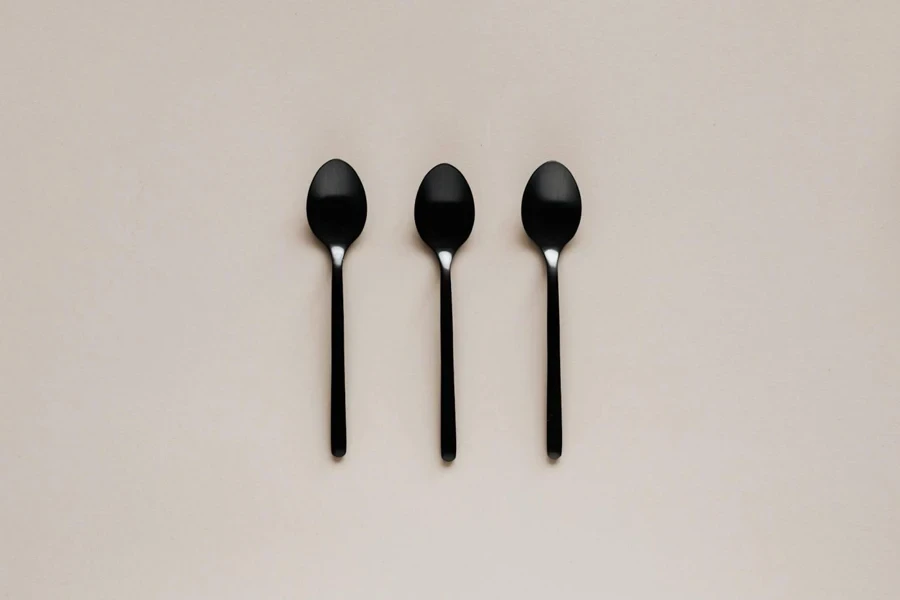
Selecting the appropriate disposable cutlery requires a careful balance of cost, environmental impact, and functionality. Considering factors such as material sustainability, durability, heat resistance, regulatory compliance, and aesthetic appeal ensures that businesses make informed choices that meet both operational needs and consumer expectations. With a comprehensive understanding of these factors, businesses can confidently choose disposable cutlery that aligns with their values and market demands.
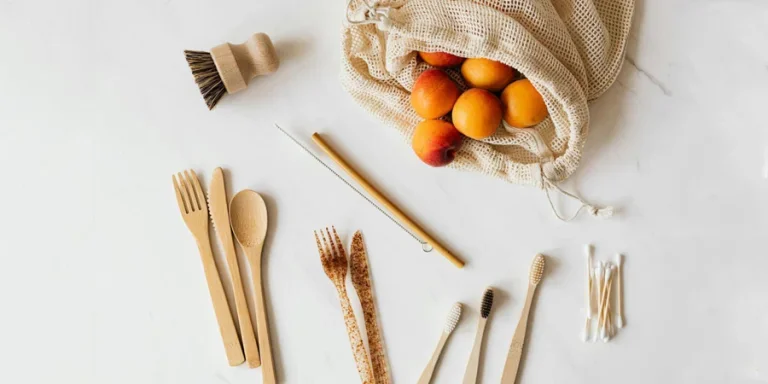




 Afrikaans
Afrikaans አማርኛ
አማርኛ العربية
العربية বাংলা
বাংলা Nederlands
Nederlands English
English Français
Français Deutsch
Deutsch हिन्दी
हिन्दी Bahasa Indonesia
Bahasa Indonesia Italiano
Italiano 日本語
日本語 한국어
한국어 Bahasa Melayu
Bahasa Melayu മലയാളം
മലയാളം پښتو
پښتو فارسی
فارسی Polski
Polski Português
Português Русский
Русский Español
Español Kiswahili
Kiswahili ไทย
ไทย Türkçe
Türkçe اردو
اردو Tiếng Việt
Tiếng Việt isiXhosa
isiXhosa Zulu
Zulu